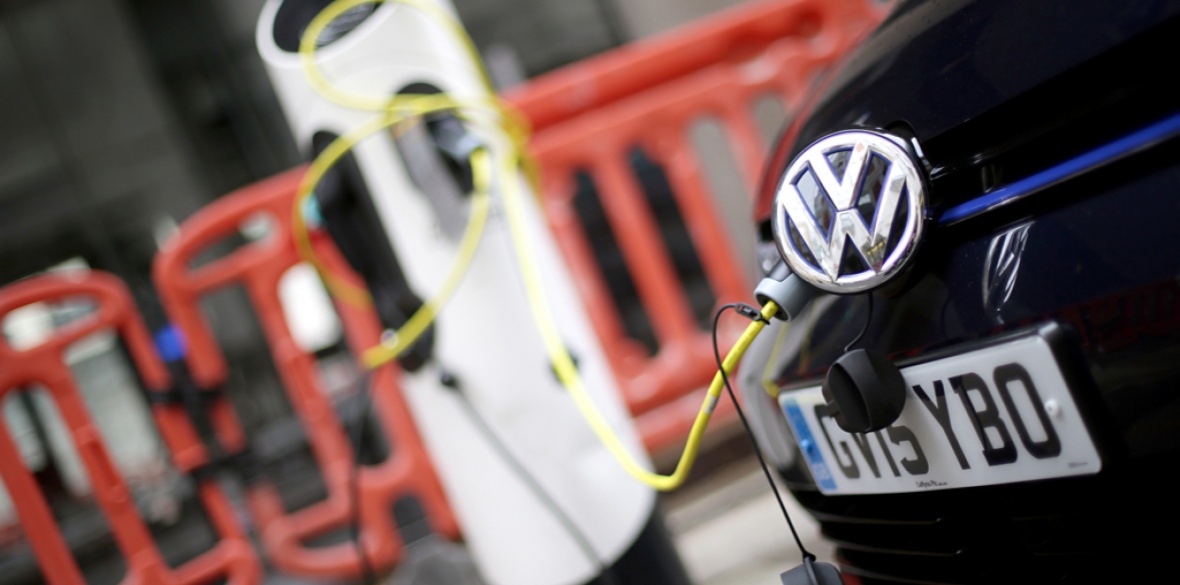This is the last article you can read this month
You can read more article this month
You can read more articles this month
Sorry your limit is up for this month
Reset on:
Please help support the Morning Star by subscribing here
THIS week it was announced that Australia’s “electric highway” has finally been completed.
This highway was a three-year project which involved installing charging points for electric vehicles in every populated region of the country. This massive transformation is part of a voluntary initiative run by the Tesla Owners Club of Australia (TOCA) which splits the costs of installation with the Australian Electric Vehicle Association.
With more than 10,000km of power gaps just a few ago, today this “electric highway” spans an over 17,000km which means that motorists can go anywhere in the country without having to rely on petrol or diesel.
Also this week, the Netherlands added Tesla Powerpacks to 20 of its universal charging stations for electric vehicles (EVs) helping cars run on sunlight-generated energy while balancing the electric grid which allows even non-Tesla electric cars to charge.
With 200 solar panels providing clean energy, this system ensures that the power is stored when there is no sun using a 400kW/800kWh Powerpack system.
This means that sunlight will be charging EVs with this scheme of solar arrays supercharging set to be expanded throughout Europe.
A solar array is a photovoltaic system, also known as a solar power system, designed to supply usable solar power by means of photovoltaics. This latest station marks the tenth anniversary of the “Smart Solar Charging” which has resulted in the creation of numerous EV charging stations and 6,000 solar panels installed on 20 roofs.
Renault, a partner in the project along with Tesla, supplied a fleet of 150 Renault ZOE electric vehicles. Tesla CEO Elon Musk has also linked the accelerated deployment of these solar arrays in order to coincide with the introduction of the new Supercharger V3, due to be released later this summer.
Tesla has stated that it will add solar arrays and Powerpacks to its already existing grid-based charging stations, but the deployment is so far confined to a few stations. The expectation is that we should prepare for more solar arrays to be thoughtfully installed in urban centres and motorways in order not to create more carbon emissions typical of power plants.
In Britain, electric vehicles face many more challenges because sunlight is not nearly as abundant as in Australia such that charging EVs can be challenging even in the daytime. So the thought of solar array charging stations is not yet a priority in the country, even if it should be. A related disagreement is whether or not Britain has enough charging points for the eventual boom in the EV market.
One viewpoint is that the country is woefully undersupplied with charging points as only 3 per cent of supermarkets have a charging point and rapid chargers which can fill 85 per cent of an EV batter in 30 minutes are even less common.
On the other side of this argument, a recent report states that there are only 20 EVs on sale in Europe as compared to 417 conventional petrol and diesel vehicles, a fact which has slowed down the EV market uptake. The study shows that there are more than enough charging points in Britain (six cars per charging point), with the current EU recommendation being 10 cars per charging point.
The conclusion of this report is that the infrastructure for charging EVs is more than adequate while locating the problem with the EV manufacturers which are dragging their feet in creating more models.
Yet Britain is precisely where Australia was just three years ago in creating its charging infrastructure. The latest estimate is that the entirety of Britain needs 100,000 EV charging points by 2020 and there are companies desperate to be stakeholders in this burgeoning industry such as Swedish energy giant Vattenfall, which has moved quickly into the British EV market.
By creating charging points around the country so that EV drivers will have access to charge their vehicles at work and in public spaces, Vattenfall is breaking with the British trend where drivers must currently charge their vehicles within specific networks where they are a member and have paid a subscription.
There are various EV manufacturers in Britain which are offering viable alternatives to the pricey Tesla which starts at £62,000 and the Jaguar, which kicks off at just under £60,000.
Manufacturers like Nissan, Ford and Bradshaw (for industrial EVs) are hitting the ground running and are pushing the British EV market forward. But the transfer to EVs is not rising in proportion to the ecological urgency at hand, nor is it offering consumers the choices they seek.
Still there are areas of improvement needed in the development of more charging points in the country, especially Wales and Devon where the distance to the nearest charging point is anywhere between 12 and 45 miles respectively. That said, the British government is offering up to £4,500 off zero-emissions cars through its Plug In Car Grant, making the higher purchase price and showroom costs much more bearable for the consumer.
Since the beginning of 2011, more than 144,000 EVs have qualified for this grant but there isn’t the broad range of choices of purely electric vehicles.
Given that Britain is considering banning all non-electric cars by 2040, we need to start turning our sights towards EVs while encouraging the creation of solar charging stations that will not put pressure on the electric grid as people transition from fossil fuel vehicles towards renewable sources like solar, wind and hydropower.
Considering how our EVs can benefit the environment by reducing local air pollution, we must back solar power stations and EVs urgently.











